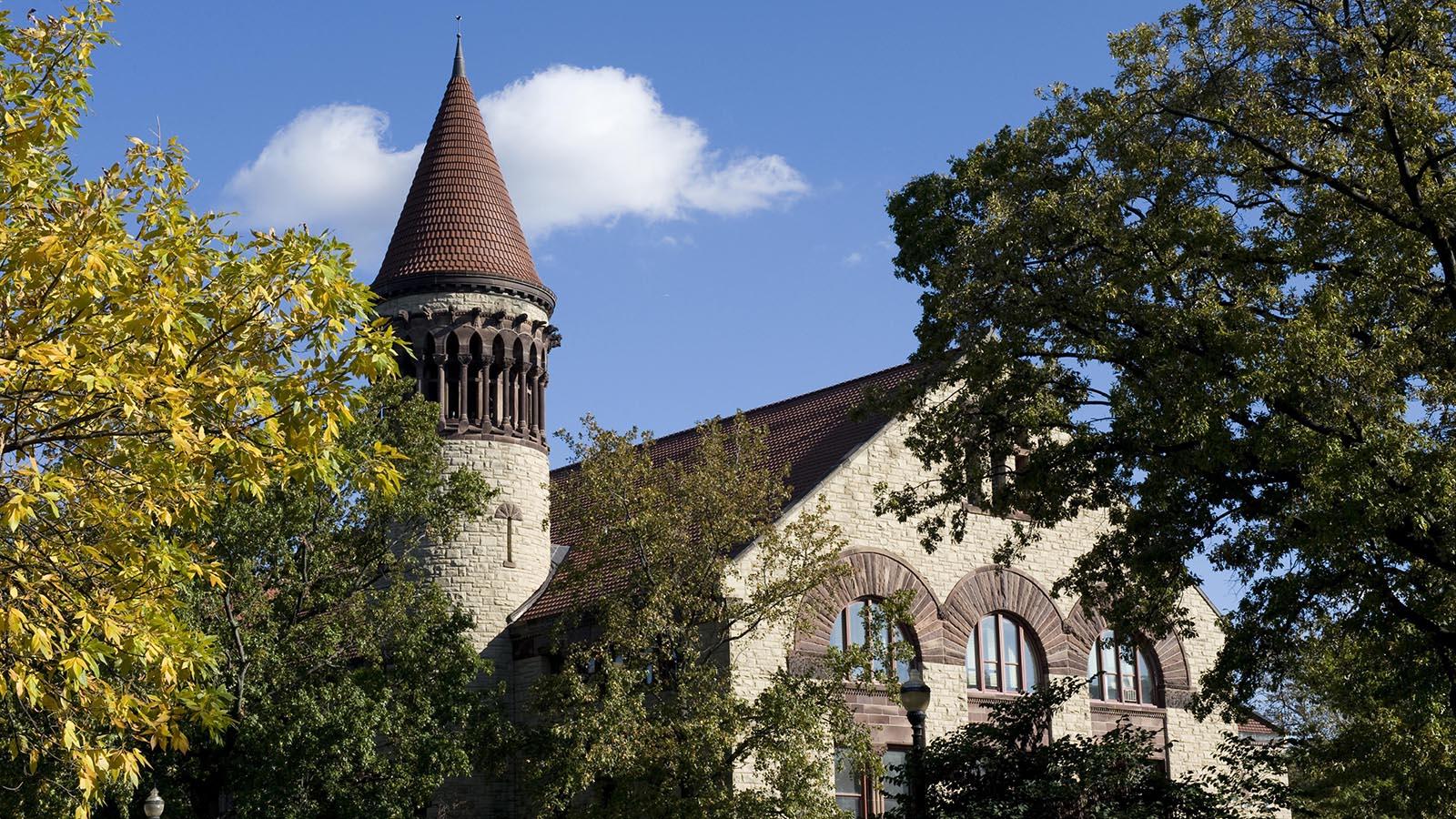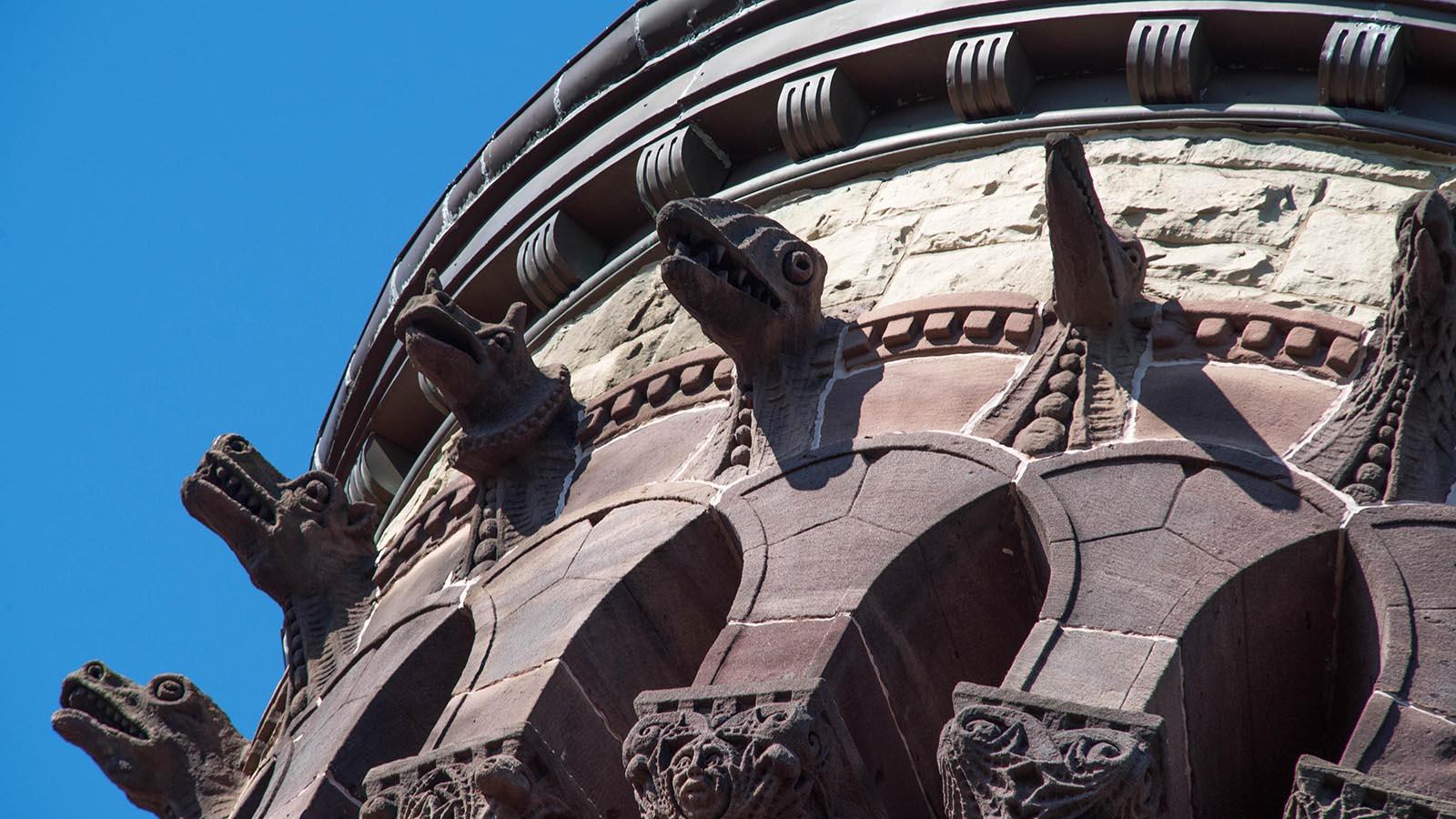Orton Hall is one of the most iconic buildings on The Ohio State University campus. It, along with Hayes Hall, which is across the Oval from Orton Hall, were both completed in 1893, and both are on the National Register of Historic Places.
Orton Hall was named for Edward Orton, the University's first President, and its first Professor of Geology. The building was built to house the Orton Geological Museum, the University Library, classrooms, and office space. It was the first building erected in Ohio to house a museum. The collection that formed the nucleus for the Orton Geological Museum was assembled beginning in 1874. From 1874 to 1893, the Museum collection was housed in University Hall. The Museum collection moved to its current location in Orton Hall in 1893.
Orton Hall was designed by the architectural firm of Yost & Packard. Joseph Yost and Frank Packard designed many iconic buildings around central Ohio, and are among America’s most renowned architects. Construction of Orton Hall was authorized by the Ohio Legislature in 1891, and the building was completed and opened to the public in August, 1893.
Orton Hall is one of the most fascinating buildings in the world. It is the only one we know of that was intentionally designed to reflect geologic time, and its architecture is a reflection of the geologic time scale. Originally, Orton Hall was constructed of Ohio building stone exclusively, arranged in correct stratigraphic order, from Silurian at the base to Carboniferous near the top of the bell tower. The main structure of the building therefore represents the Paleozoic Era. The intricate stone carvings inside and outside are breathtaking, and are also geologic in nature. The grotesques in the upper reaches of the bell tower depict Mesozoic Era and Cenozoic Era animals, including reptiles and mammals, so all together, the exterior of the building depicts Paleozoic, Mesozoic, and Cenozoic stratigraphy and life forms. The chimes in the bell tower are a reminder of passing time. In sum, the building reflects time and change.
Edward Orton had his office in Orton Hall. He was an influential scientist, having made important contributions to among, other things, theory related to the natural occurrence of petroleum in sedimentary strata. Edward Orton began the collection that comprises the core of the Orton Geological Museum. His son, Edward Orton Jr., also was an early faculty member in Geology. He added to the collection of the Museum, and donated the core collection that comprises the Orton Memorial Library. Edward Orton Jr. instituted the study of Ceramic Engineering, and the first university classes in that discipline were held in Orton Hall.
Today Orton Hall houses the Orton Geological Museum, the Orton Memorial Library, and various offices and laboratories.


